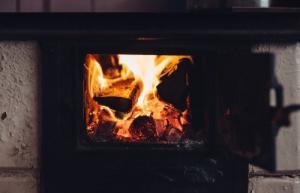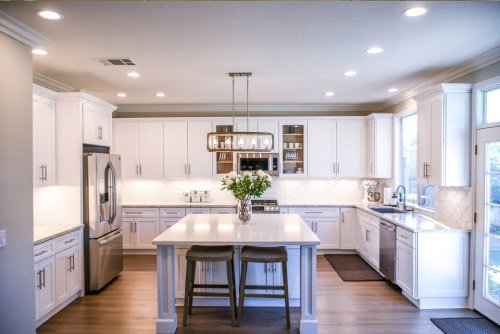Your Guide To Wood Stove Installation: Everything You Should Know

In this era of everything electric, something like a wood-burning stove might raise a couple of eyebrows. People might ask why go for something very old school and potentially dangerous? Well, there is still a certain level of charm that comes with this type of stove. That is among the many reasons why wood stove installation professionals are still in business!
So in the event that you’re considering installing a wood burning stove in your home, this is the article for you. Read on to know the most important things about going for a wood-burning stove. Why should you install it? What do you need to do before having it installed, etc? These are among the several topics the article covers, so sit back, relax, and learn a thing or two!
How Much Does A Wood Stove Installation Usually Cost?
Like every other service out there, installing a wood stove commands a wide range of prices that depend greatly on the overall quality and individual pricing of service providers. What we can provide, however, is a rough estimate of what you could expect to pay if you go for such a service. But keep in mind that these aren’t exact prices!
Installing a relatively modern wood stove can cost you between $1,200 to $4,500 on a typical day. If you decide to install an add-on such as a chimney, you can expect the price to climb to around $2,300 to $7,000. Labor alone would cost around $250 to $800, and it includes every process to make sure the stove works right such as fitting, installing a stove pipe and ventilation system, the construction of a chimney, , as well as installing a hearth pad and wall coverings.
There are also other options such as installing a stove into an existing fireplace, as well as converting a gas fireplace to a wood-burning one. Installing a stove into an existing fireplace can cost between $900 to as much s $3100, inclusive of labor and materials. And there are also two common types of stove inserts, which can affect the price as well:
- Freestanding stove: This type of stove can be installed directly in front of an open fireplace. Most of the time, the existing hearth pad will need an extension, and the chimney must be fitted with a stainless steel liner.
- Fireplace insert: This is inserted directly inside an open fireplace. Aside from that, workers must also install blowers to circulate the air, which will require electricity to power.
As for converting a gas fireplace, the average cost is around $100 to $300. It’s easily the cheapest of all options, but this is only impossible to do with a ventless fireplace. Not to mention, there might be extra charges you have to pay for things such as replacing the stainless steel liner, replacing old or broken parts, and repairing the masonry, among others.

Why Would I Want A Wood Stove In My Home?
According to statistics, wood-burning stoves are highly sought after by buyers when looking for a new home. Experts say that a wood burner actually equals the value added by a brand new bathroom, which is around 5%. The home’s value can increase even further if the wood stove has a chimney attached to it, too. So if you’re looking to resell your home in the future, you can expect a price increase and a larger payday!
Tips For Installing A Stove On Your Own
For those who want to go for a DIY wood stove installation project, you have to consider a lot of things as well. But most of these involve just one main factor: safety.
For one, building a wood stove from scratch means you’ll have to pick out the right glass door. A good glass door will keep the fumes out of the house, and also protect everything else close to the stove from the roaring flames. You have two options when choosing a glass door for a wood burning stove:
- Ceramic glass is the best option for burning wood, coal, and pellets. This is because ceramic glass is durable enough to withstand continuous temperatures over 1000° F. Since wood burning stoves are used with the door closed, the glass must be able to handle the intense heat.
- Tempered glass is the most common option for stove doors, though this is for those who want their stove doors open. Tempered glass can’t be exposed to extreme heat because it could damage or shatter it.
For those who are wondering which type of glass to pick, you can visit us at Peninsula Glass and we can help you out!
Aside from the glass door, the placement of the wood-burning stove is also important. As much as possible, avoid simply setting it on or next to a noncombustible surface, such as concrete or brick, because this may not be enough. The stove can still conduct heat to the surface underneath, which can still catch fire.
For maximum safety, all combustible materials such as woodwork, furniture, firewood, unprotected walls, and even that stack of old magazines and newspapers should be at least 36 inches away from the stove. Another thing to consider is the stove’s leg clearance. If the legs have a clearance of less than 6 inches, you must install at least 2 to 4 inches of hollow masonry along with a 28-gauge sheet of metal underneath. Do this and you will have enough clearance to protect from sparks and embers.
Final Thoughts
Any wood stove installation project will fail if you don’t consider these tips. It’s all about safety, people! The only way to truly enjoy a classic wood-burning stove is making sure that everything is as safe as can be.
